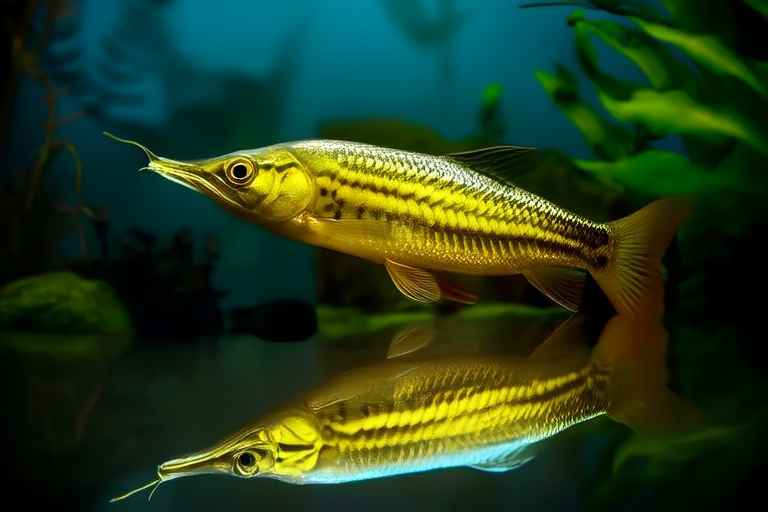From Exotic to Popular: The Rise of Arowana as a Unique Pet
The arowana, a species of freshwater fish known for its striking appearance and unique behaviors, has long been revered in Southeast Asia for its cultural and economic significance. This article delves into the fascinating world of arowanas, exploring their origins, physical characteristics, behaviors, and the reasons behind their growing popularity as pets. Additionally, we will provide essential care guidelines and discuss the future trends in arowana ownership.
Origins and Historical Significance
Arowanas belong to the family Osteoglossidae and are native to parts of South America, Africa, and Southeast Asia. In Southeast Asia, particularly in countries like Malaysia, Thailand, and Indonesia, these fish have been cherished for centuries. They are often seen as symbols of good luck and prosperity, with some cultures believing that keeping arowanas brings wealth and fortune to the household.
The historical reverence for arowanas extends beyond mere symbolism. Historically, they were also prized for their size and strength, making them popular among fishermen. Their large scales and imposing presence made them valuable trophies. Over time, this admiration evolved into a passion for breeding and maintaining arowanas in captivity, leading to the development of specialized breeding techniques and the establishment of strict regulations to protect wild populations.
Physical Characteristics and Behaviors
Arowanas are known for their sleek, elongated bodies and distinctive features. Their large, iridescent scales shimmer with a metallic sheen, ranging from silver to green, depending on the species. These scales are not only aesthetically pleasing but also serve as protection against predators. One of the most striking features of arowanas is their ability to leap out of the water to catch insects and small birds, a behavior known as “surface feeding.”
Behaviorally, arowanas are highly intelligent and active. They exhibit complex social behaviors, including schooling and territorial displays. Their intelligence is evident in their problem-solving abilities, such as figuring out how to manipulate objects to obtain food. Arowanas are also known for their strong parental instincts, with both parents actively involved in protecting their offspring.
Reasons Behind Increasing Popularity
The rise in popularity of arowanas as pets can be attributed to several factors. Firstly, their striking appearance makes them stand out in any aquarium, adding a touch of elegance and exoticism. Secondly, the cultural significance associated with arowanas in many Asian cultures has sparked interest among collectors worldwide. Additionally, advancements in aquarium technology and breeding techniques have made it easier for hobbyists to maintain these fish successfully.
Another reason for their growing popularity is the unique challenges they present to dedicated aquarists. Caring for arowanas requires knowledge and commitment, which appeals to enthusiasts who seek a rewarding and fulfilling hobby. Moreover, the rarity and exclusivity of certain arowana breeds further fuel the demand among collectors.
Care Requirements and Tank Setup
Maintaining arowanas in captivity requires careful consideration of their specific needs. Proper tank setup is crucial for ensuring the health and well-being of these fish. Arowanas need spacious tanks with ample swimming space; ideally, a tank should be at least 300 gallons for a single adult arowana. The tank should be equipped with robust filtration systems to handle the waste produced by these large fish.
Water quality is paramount for arowanas. They prefer slightly acidic to neutral water with a pH range of 6.0 to 7.5 and a temperature between 78°F and 84°F (25°C to 29°C). Regular water changes and monitoring of water parameters are necessary to maintain optimal conditions. Additionally, arowanas require hiding spots and plants to feel secure and to mimic their natural environment.
Feeding arowanas can be an enjoyable part of caring for them. These fish are carnivorous and thrive on a diet of live or frozen foods such as feeder fish, shrimp, and insects. Some aquarists also feed them pellets designed for large carnivorous fish. It’s important to ensure a balanced diet to promote healthy growth and vibrant coloration.
Dietary Needs
Arowanas are primarily carnivores, and their diet should reflect this preference. High-protein foods such as frozen or live fish, shrimp, and insects form the core of their diet. However, it’s essential to vary their meals to provide a balanced nutritional profile. Aquarists can supplement their diet with commercial pellets specifically formulated for large carnivorous fish, which offer a convenient and nutritious option.
Feeding discipline is crucial when caring for arowanas. Overfeeding can lead to obesity and health issues. Therefore, it’s advisable to feed them small amounts two to three times a week, allowing them to consume the food within a few minutes. This approach ensures that the fish remain active and healthy while preventing excess waste buildup in the tank.
Future Trends in Arowana Ownership
The future of arowana ownership appears promising, with continued growth in the number of enthusiasts worldwide. Advances in breeding techniques are likely to result in more diverse and attractive varieties, further increasing their appeal. Additionally, stricter regulations on the trade of wild-caught arowanas are expected to encourage responsible breeding practices, ensuring the sustainability of this beloved pet.
The trend towards eco-friendly and sustainable pet ownership is also influencing the arowana market. As more people become aware of the environmental impact of the pet trade, there is a growing preference for captive-bred specimens. This shift not only benefits the environment but also supports ethical breeding practices.
Conclusion
From its origins in Southeast Asia to its current status as a popular pet, the arowana has captured the hearts of aquarium enthusiasts around the world. Its unique physical characteristics, intelligent behaviors, and cultural significance make it a truly remarkable fish. With proper care and attention, owning an arowana can be a rewarding and enriching experience. As the popularity of these fish continues to grow, it is essential to prioritize responsible ownership and sustainable practices to ensure the well-being of these magnificent creatures.
